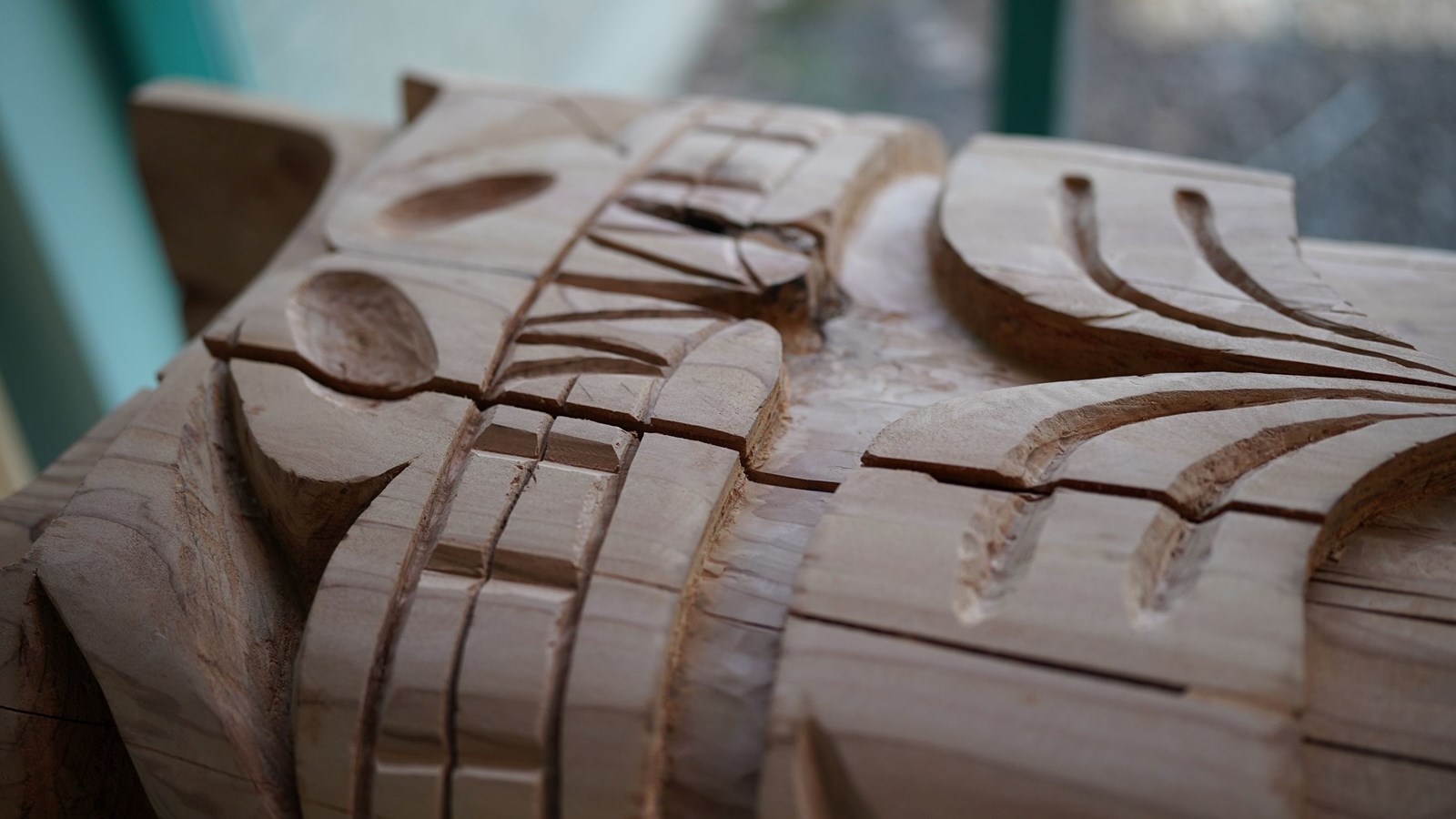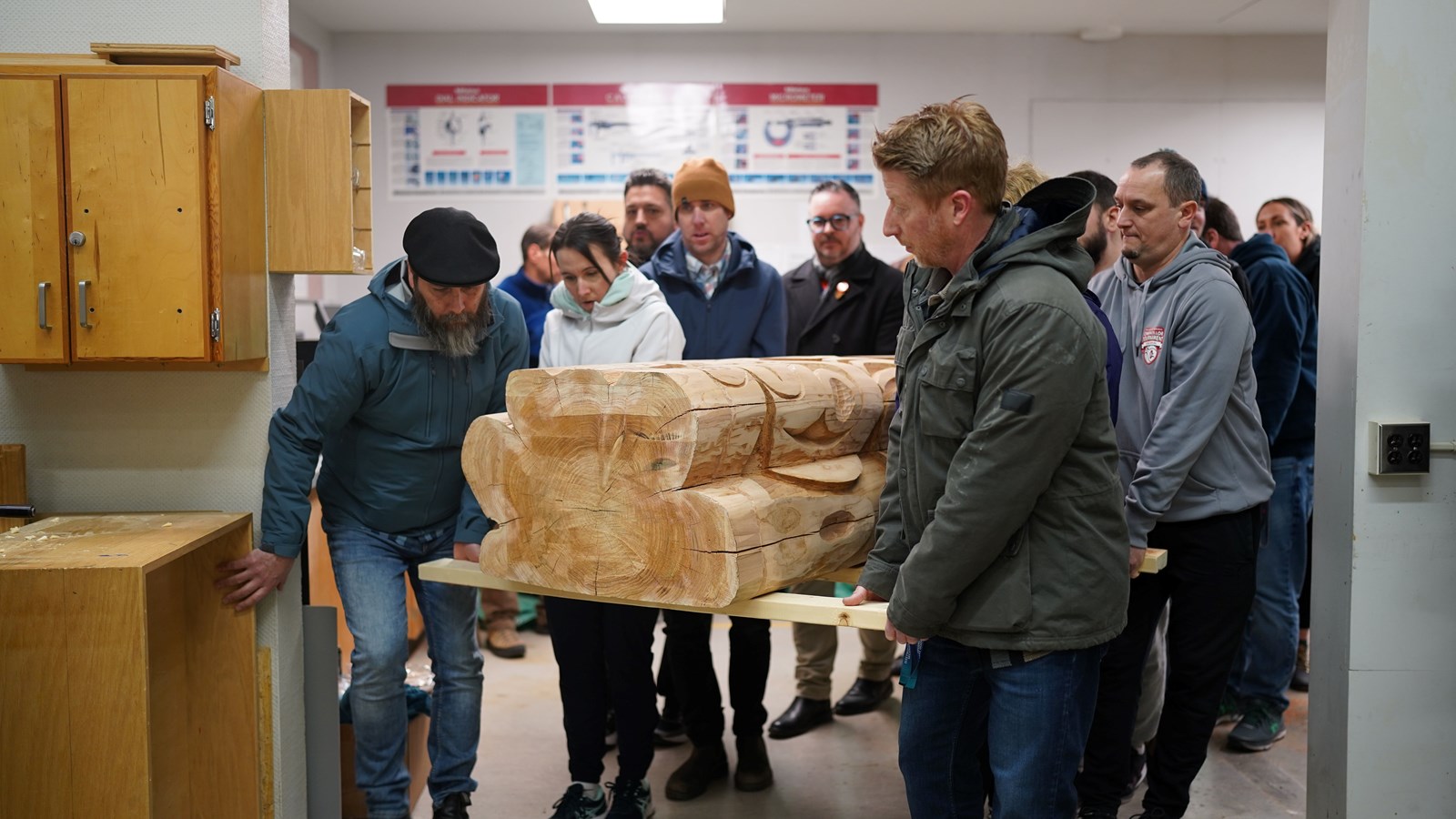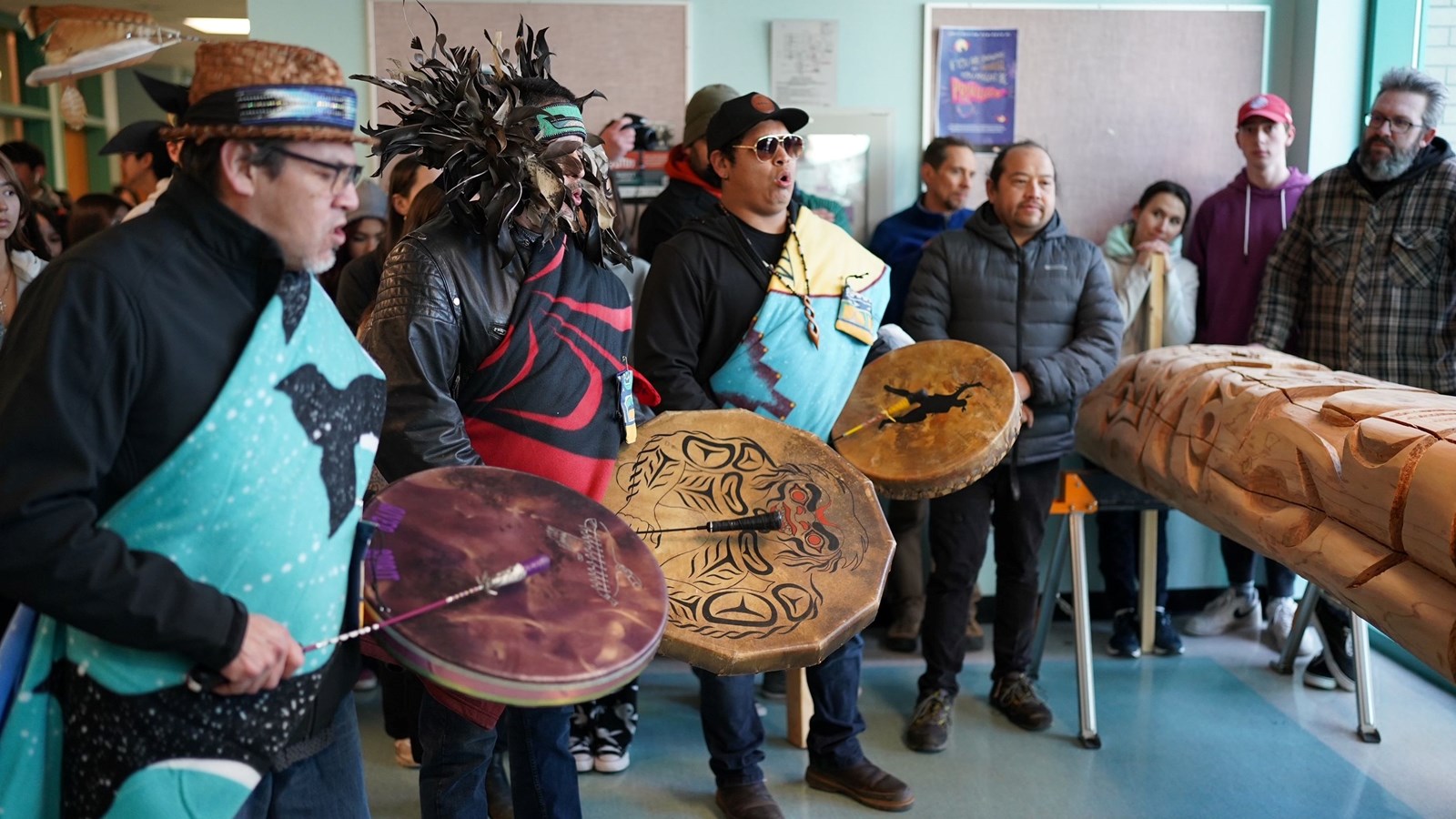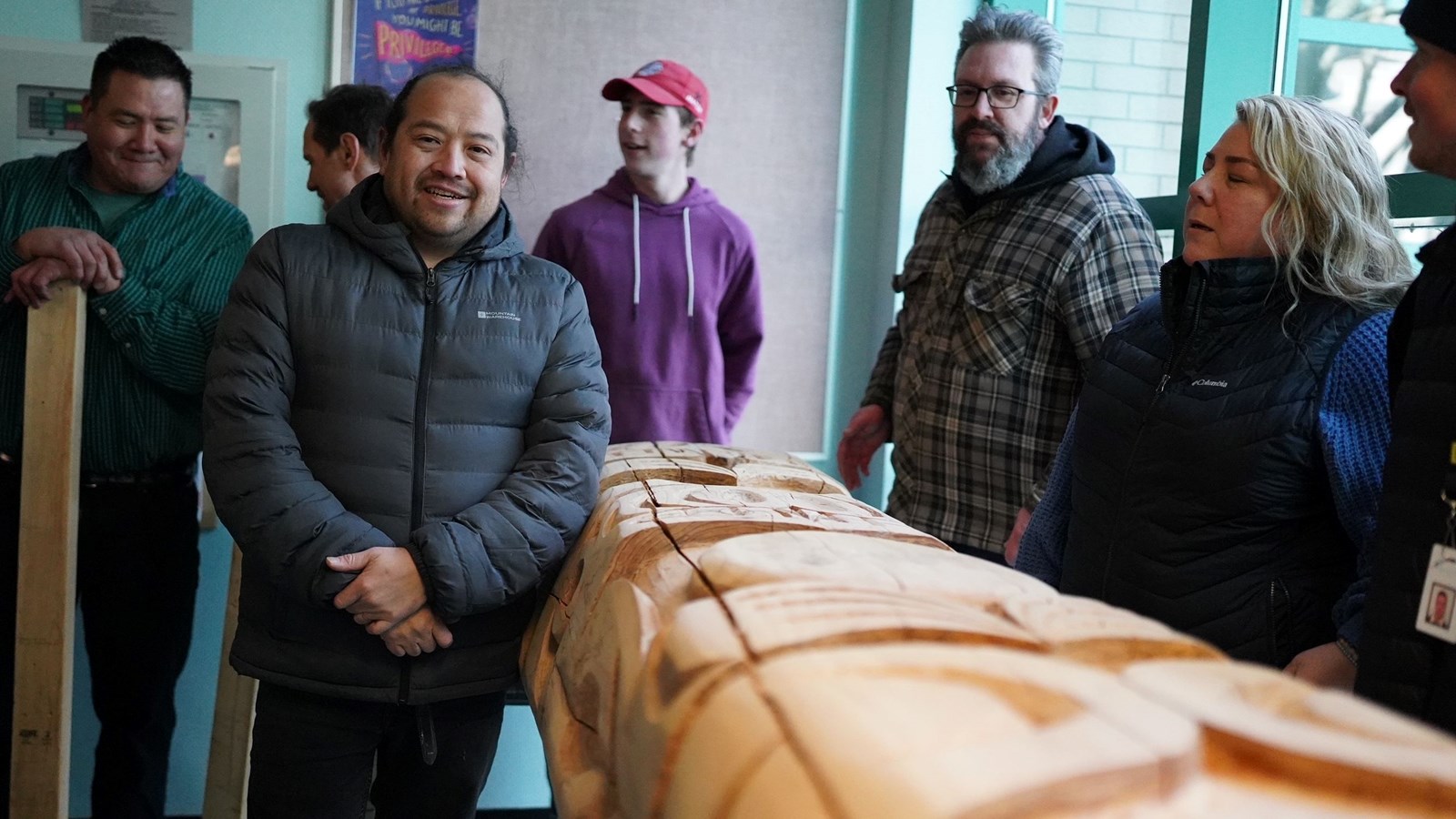Nine schools across Surrey receiving new welcome posts carved by Coast Salish artists
 Kwantlen Master Artist Brandon Gabriel (centre) with the welcome figure he carved for Fleetwood Park Secondary at the traditional moving ceremony to bring the figure into the school. Nine schools across the district will soon have welcome figures on display to signify that students, staff, parents and visitors are welcome and recognize the traditional territories of the Coast Salish people.
Kwantlen Master Artist Brandon Gabriel (centre) with the welcome figure he carved for Fleetwood Park Secondary at the traditional moving ceremony to bring the figure into the school. Nine schools across the district will soon have welcome figures on display to signify that students, staff, parents and visitors are welcome and recognize the traditional territories of the Coast Salish people.
The Surrey School District will soon unveil new welcome posts at nine schools, designed and carved by two Coast Salish artists, intended to encourage more inclusive environments for Indigenous students, parents and families at our schools.
For the better part of the past year, Surrey Schools has worked with Sts’ailes (Chehalis) Master Carver, Gary Leon and Kwantlen Master Artist Brandon Gabriel to bring welcome posts to our schools, as part of the district’s ongoing reconciliation efforts. The schools that will unveil posts in the coming months include Bothwell, Douglas, Edgewood, Maddaugh and Regent Road elementary schools, and Fleetwood Park, Fraser Heights, Frank Hurt and Grandview Heights secondary schools.

“One of the main reasons is to welcome the Indigenous families in a way that is from their culture, their background, while respecting the local territory,” said Paula James, senior Indigenous district language and culture facilitator with the district’s Indigenous Learning department. “This is a strong, beautiful culture and it’s important that even the visitors to our schools see that we are, as a district, taking part in acknowledging the territories of the Coast Salish people.
“With each school, the welcome figure will be carved by a local artist out of a cedar log and will follow the protocols and ceremonies for unveiling at each school.”
The first welcome post will be unveiled at Maddaugh Elementary on Thursday, March 30, with more unveilings taking place through the end of this school year. Leon designed the welcome posts for Douglas, Edgewood, Maddaugh, Regent Road and Bothwell elementaries, as well as Fraser Heights and Grandview Heights secondary schools, while Gabriel designed the welcome post for Fleetwood Park and Frank Hurt secondary schools.
James said welcome figures are of historical significance to First Nations and are used by the Coast Salish to welcome people to their territories.
“Welcome figures are not just art, they are part of our customs, part of our way of life,” she said. “From the district’s point of view, we want to respect the territories we’re in and show that we want everyone to have a better understanding of First Nations culture.
“From a First Nations perspective, I think it’s a huge step for the district to approach the land-based nations and recognize the local culture by having welcome figures at their schools. It is exciting on both sides, and we want our Indigenous families to feel welcomed.”

Leon has additional welcome posts in the works for the new Snokomish and Ta’talu elementary schools as well as K.B. Woodward Elementary, while Gabriel is also working on one for Frank Hurt Secondary. Katzie Elementary’s existing welcome figures were also recently refinished by Sts’ailes artist Lee Prevost, with assistance from a few Katzie members, and will be remounted in the spring.
The figures for Douglas, Edgewood, Maddaugh and Regent Road are old growth yellow cedar, all carved from one 24-foot straight-grain log with no knots. The log was three feet in diameter and transported from the Katzie First Nation to the Chehalis First Nation before being mill cut to size for the multiple posts.
The other schools’ welcome figures are made from red cedar, and each figure will have a traditional Salish-woven blanket or cedar cape and cedar hat. Each figure has a unique design, making them individual to each school.
James said it was important that the district support Indigenous artists from the region.
“We have local artists who are a part of these projects and it’s supporting them and their work, their way of life,” she said.
Each welcome post will be unveiled during a ceremony at each school between now and the end of the school year, with the artists and members of the Coast Salish First Nations on hand.
“It’ll be a celebration – it’s been a wonderful journey to have these welcome figures brought into our schools and having a local carver is an excellent opportunity for them and for us to learn from each other,” said James.
“It’s going to add to their school atmosphere, having that welcoming at the entrance and adding to their sense of pride through a First Nations perspective.”





